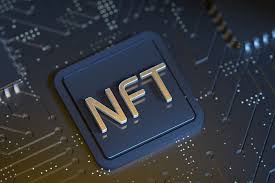NFTs (Non-Fungible Tokens) have emerged as a game-changer in the digital economy, particularly in the art and entertainment industries. These blockchain-based assets allow artists, musicians, and creators to monetize their work like never before. This article explores the impact of NFTs on these industries, their benefits, challenges, and the future of digital creativity.

What Are NFTs?
NFTs are unique digital assets stored on blockchain technology, ensuring ownership and authenticity. Unlike cryptocurrencies like Bitcoin, NFTs are non-fungible, meaning each one is distinct and cannot be exchanged on a one-to-one basis.
Key Features of NFTs
-
Indivisibility: Cannot be split into smaller units
-
Authenticity: Ownership is verifiable on blockchain
-
Scarcity: Limited supply enhances value
-
Interoperability: Can be used across different platforms
Impact of NFTs on the Art Industry
Benefits for Artists
| Benefit | Description |
|---|---|
| Direct Sales | Artists can sell their work without intermediaries |
| Royalties | Smart contracts enable automatic royalty payments on resales |
| Global Exposure | Digital marketplaces provide worldwide reach |
| Ownership Proof | Blockchain technology ensures authenticity |
Challenges in the Art Industry
| Challenge | Explanation |
| Market Volatility | NFT values fluctuate unpredictably |
| Environmental Concerns | High energy consumption of blockchain |
| Legal Issues | Copyright disputes and ownership conflicts |
| Market Saturation | Excessive supply may reduce exclusivity |
NFTs in the Entertainment Industry
NFTs are also reshaping entertainment, including music, movies, and gaming.
Music Industry
-
Direct Fan Engagement: Musicians can sell exclusive tracks, concert tickets, and memorabilia as NFTs.
-
Royalties: Automated payments through smart contracts ensure continuous income.
-
Ownership & Copyright Protection: Blockchain prevents unauthorized duplication.
Film Industry
-
Crowdfunding: Filmmakers use NFTs for raising production funds.
-
Exclusive Content: Fans can buy rare behind-the-scenes clips or director’s cuts.
-
Decentralized Distribution: NFT-based platforms enable direct-to-fan content sharing.
Gaming Industry
-
In-Game Assets: Players can buy, sell, and trade unique digital items.
-
Play-to-Earn Model: Gamers earn rewards in NFTs, creating new income opportunities.
-
Cross-Platform Usability: NFT items can be used across multiple games.
Future of NFTs in Art & Entertainment
The NFT market is evolving rapidly, with emerging trends like:
-
Fractional Ownership: Allowing shared ownership of digital assets.
-
Metaverse Integration: Virtual worlds incorporating NFT-based art and collectibles.
-
Eco-Friendly Blockchains: Development of energy-efficient NFT solutions.
-
Mainstream Adoption: Major brands and celebrities launching NFT projects.
NFTs are revolutionizing the art and entertainment industries by providing new revenue streams, enhancing digital ownership, and offering exclusive experiences. However, challenges such as market volatility and legal uncertainties must be addressed. As technology advances, NFTs will continue to shape the future of creative industries.
FAQs
1. What makes NFTs valuable?
-
Their uniqueness, scarcity, and blockchain-based ownership authentication.
2. How do artists benefit from NFTs?
-
Artists can earn direct revenue, receive royalties on resales, and reach a global audience.
3. Can NFTs be stolen?
-
While blockchain ensures security, phishing attacks and scams remain threats.
4. Are NFTs bad for the environment?
-
Some NFT blockchains consume high energy, but eco-friendly alternatives are emerging..
Related Articles
-
Ilmkidunya 10/Apr/2025
Muneeb Ahmed serves as the Director of CMACED- Centre for Entrepreneurship Development
-
Ilmkidunya 24/Jan/2025
Pakistan Stock Exchange Crosses 115,000 Points as Rupee Strengthens
-
Team Ilmkidunya 24/May/2024
Former Provincial Minister Ibrahim Murad’s Efforts Boost Pakistan’s Meat Exports by 55% to $431M in 9 Months
-
Mehran Ali 13/Oct/2021
Approaches To Decision Making
-
Mehran Ali 13/Oct/2021
Easy ways to make a YouTube Channel
-
Mehran Ali 08/Jun/2021
Top 10 Questions People Ask About Prize Bonds Draw Schedule And Their Answers
-
Mehran Ali 10/Apr/2020
10 Careers That Will Grow After Coronavirus
-
Mehran Ali 28/Aug/2019
FastEssay.com: Yet Another Writing Service or Something Special?
-
Mehran Ali 20/Aug/2019
Forget the Screen During A Business Meeting

.gif)









.png)

